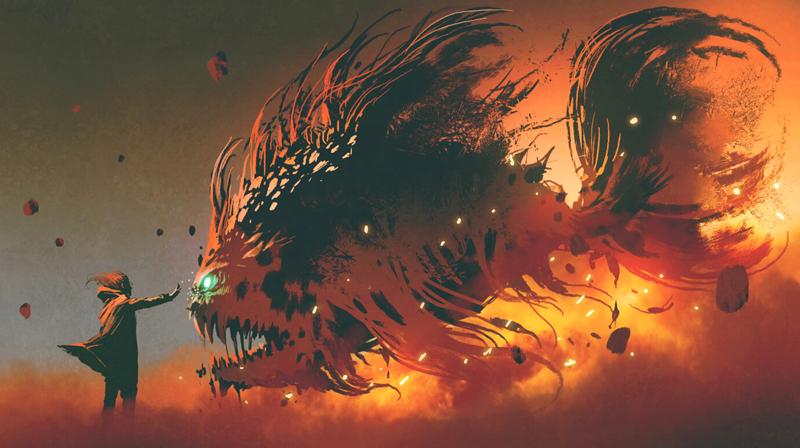
Folk stories and legends about supernatural beings is one of the common oral traditions deep-rooted among cultures around the world. These stories describing the mythical beings and their human like actions are variously adapted by people to suit their own cultural variations and this also enhances the stories in keeping with the particular cultural traditions.
Some stories are changed and adjusted over time. Some stay unchanged with the origins of the legends remaining as they were told by our ancestors. In Sri Lanka, the story about ‘Mohini,’ the helpless woman in a white sari carrying a child is one such legend which causes terror even in modern communities.
Among legends about vampires, sea monsters, aquatic demons, forest spirits, there are ones such as the Chupacabra, ‘Jersey Devil’, La Llorona and ‘Big Foot’ that have historically become common household names around the world. In the past, such folktales have often passed through generations being portrayed as true human stories denoting important messages of the culture in which it originates.
These legends act like governing spirits causing fear in people and leading them to practice and observe certain cultural norms even though the stories are not verifiable.
Even though pre-modern times were different and culturally people were governed by different methods, sometimes, suddenly, new mythical legends like the ‘grease yaka’ are born into the communities and become the focus of everyday life for a while causing terror and harm.
Sometimes, ancient legends come to the surface from time to time. At times, there is no scientific evidence to prove the said human events or actions of the origin of the mysterious beast.
It is not clear how and why these rumours irregularly surface alarming certain communities. However, these creatures that come out of nowhere stir up diurnal activities creating anxiety, fear and distrust among innocent people. They also distract them from other events happening at the time making them less crucial. ‘El Chupacabra’ is one of those legends with a history that dates beyond the pre-Colombian era in the Americas but became ‘news’ in the 1990s. ElChupacabra meaning ‘goat-sucker was not just a believable story, and with many people confessing to encounters with the beast it came as a social intervention.
The situation was investigated and analysed from many perspectives. It was important to either catch Chupacabra or prove that it was a false rumour that got out of control.
As innocent, ordinary people were experiencing the varied effects of El Chupacabra it was no longer a simplified narrative. It reached the point where the authorities or the general public couldn’t easily dismiss the matter treating it as a stupid, urban legend.
However, when conditions like these gain power victimising societies and making the matter more complicated, it’s important to stop the circulation of misinformation. Instead of supernatural beings, there can be other subjects making news grabbing attention causing terror and anxiety.
Yesterday it was ‘Mohini’ stopping three wheelers or a ‘grease yaka’ attacking women, but today, it can be a different type of calamity which people have to figure out.
Now, that we have social media platforms allowing the easy spread of harmful messages with no accountability, the damage can be severe and unimaginable. But what is the right way to prevent the circulation of deceiving stories?
Instead of focusing on finding the truth of the monster to resolve the issue, if things are done to stop people demanding investigations and transparency by the responsible authorities, there can be assumptions that such actions will control the situation, but in reality, people can be more concerned leading towards the belief that there are cover ups and some things are hidden.
Therefore, the best practice is to build clear communications between all parties, allowing and enabling fact checks and educating common people to refer to reliable sources before consulting hoax stories.
Can ordinary people really expect from politics to provide them the desirable conversation, even though that’s exactly what should be done? Yes, we are still working on electing leaders who work for us.
In events like catching the’ grease yaka’, the conversation being opened to public/constructive criticism is a right, but people too have a great responsibility in such situations to avoid being pawns in political games. Between non-believers, believers, reports, constantly changing narratives and other things it’s not easy to stay strong as a fact seeker in order to make wise decisions to protect ourselves. Yet that’s the only way to trap monsters in bottles without letting ourselves be trapped.
